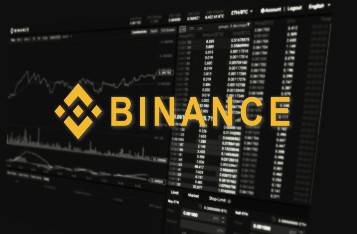
One of the features of Vanguard’s Digital Advisor Services (VDAS) that is hardest to replicate on your own is the automated tax-loss harvesting (TLH). VDAS will monitor the prices of each of your stock ETFs daily, sell some or all of them at a loss when they deem appropriate, purchase a surrogate replacement ETF at the same time to avoid IRS wash rules, and keep track of what could be hundreds of different tax lots on an ongoing basis. A DIY investor could perform a similar version of this, but it would definitely be higher on the continuum of effort and skill required.
Therefore, a potential customer might want to estimate the benefit from TLH, and compare that with the VDAS fee of ~0.15% annually. It is possible that the TLH feature could completely offset the cost of the entire service. I dug around and found the following resources that explain everything from the general background behind TLH to how VDAS implements them specifically.
You’re ready for any market with tax-loss harvesting (Vanguard General Education) Vanguard Personal Advisor Services Tax-Loss Harvesting FAQs Tax-loss harvesting: Why a personalized approach is important (Vanguard Research) Your mileage may vary: Setting realistic tax-loss harvesting expectations (Vanguard Research) Service Agreement for Vanguard Discretionary Advice Services Tax Loss Harvesting Addendum to Vanguard Discretionary Advice Service AgreementI especially appreciate the intellectual honesty of the research whitepapers because it is one of the few articles from a robo-advisor that actually admits that TLH can actually lower your after-tax return if your personal situation is not ideal. Most other robo-advisors quote some pretty idealistic assumptions to get their numbers. Here’s a quote:
In recent years, tax-loss harvesting (TLH) has been aggressively advertised as a near-certain way to increase after-tax returns by anywhere from 100 basis points to 200 basis points—in some cases even 300!—annually. […] But many individual investors do not fit this mold or should first focus on other more valuable options such as investing in tax-advantaged accounts. These investors will eventually be disappointed with the size of their TLH benefit if they set their expectation at 100 to 200 basis points.
Here are the many factors that will affect the actual benefit from tax-loss harvesting, along with a brief description and how VDAS handles it.
Future stock price volatility. You need losses to harvest them, and the bigger the losses, the bigger the harvest. You then need the stock price to bounce right back, preferably quickly after you harvest them. Stable and steadily-growing markets aren’t helpful in creating TLH alpha. How often will you keep making new investments. If you have frequent regular investments of new cashflows, this creates more tax lots where a loss could result, and then harvested. Future time horizon. Markets tend to go up over time. As time goes on, the benefit of TLH will decrease because there will be fewer losses left to harvest. How often will they check for losses. Monitoring the situation daily should help find more opportunities to harvest losses. Vanguard Digital Advisor states they will check daily. Number of different portfolio securities held. The more different things you can sell to create losses, the more TLH opportunities there are. Expect “direct indexing”, where you own a tiny bit of every stock instead of a pooled ETF, to be marketed more and more heavily in the future. Vanguard Digital Advisor holds ETFs, not individual securities. Do you have external capital gains to offset losses? Tax savings are generated by using harvested losses to offset capital gains elsewhere. Without capital gains, taxable ordinary income can only be reduced by up to $3,000 a year. Therefore, people with small businesses, private equity, real estate, or other investments that generate a lot of capital gains are more likely to benefit from harvesting losses. Your current and future tax brackets. Tax savings are generated now by offsetting capital gains and income at your current tax rate. However, you are lowering your cost basis and thus deferring those capital gains to the future. If your future tax bracket is higher, then you may actually end up paying more in taxes later. Note your future tax bracket may be higher due to legislation, not only due to income changes. Others expect to defer “indefinitely” and use the step-up in basis upon death or make a qualifying charitable donation. Reinvesting tax savings. A significant part of the theoretical TLH benefit comes from investing any tax savings so that you are taking advantage of those deferred taxes and growing them further. Future stock market return. This effect from the compounding of reinvested tax savings depends on the size of the market return, obviously.
As you can see, many of these factors depend on your personal situation. Vanguard introduces two imaginary model investors to explain the potential differences. This is my own abbreviated summary.
Robin is a doctor in her early 30s. She is currently in the 22% income tax bracket. But after she finishes her residency in two years, she expects to spend most of her career in the 32% bracket or higher. She mostly saves in tax-deferred accounts, so she doesn’t expect to generate significant capital gains. Due to fact that her future tax rate is higher than now, and her low expectations for capital gains, her likely benefit is low, possibly zero or even negative.
Bruce is in his late 50s and a partner at a large consulting firm that regularly realizes capital gains when new partners buy into the partnership and when he eventually sells all his shares for ~$4 million. Essentially, unlimited capital gains to offset losses. He is currently in the 35% bracket, but, based on his plans for a frugal retirement lifestyle, he aims to be in the 24% income tax bracket throughout retirement. Due to the fact that he expects his future tax rate to be lower than now, and his high expectations for capital gains, his likely benefit is high, with a median projected benefit of 0.47% annually.

These appear to be reasonable estimates for the real-world benefit of TLH at two relatively extreme examples. I think most people will be somewhere in between. So a median expectation of 0% to 0.50%, but just as important, a wide possible range of actual results! Many other robo-advisor presentations do not adequately disclose their assumptions, including the possibility of negative “alpha” if your tax rates end up being higher in retirement. (Many people feel that higher tax rates will eventually be coming due after years of deficits.)
I hope that this information will allow a potential VDAS/VPAS customer to manage their own expectations of the benefits of TLH, based on their own individual factors – most importantly, having sizable new investments that may result in temporary losses, the expectation of lower tax rates in the retirement/withdrawal phase, and having enough capital gains from other activities to offset any harvested losses.
“The editorial content here is not provided by any of the companies mentioned, and has not been reviewed, approved or otherwise endorsed by any of these entities. Opinions expressed here are the author's alone. This email may contain links through which we are compensated when you click on or are approved for offers.”
Vanguard Digital Advisor: Estimating the Benefit of Tax-Loss Harvesting from My Money Blog.
Copyright © 2004-2022 MyMoneyBlog.com. All Rights Reserved. Do not re-syndicate without permission.












 Bengali (Bangladesh) ·
Bengali (Bangladesh) ·  English (United States) ·
English (United States) ·